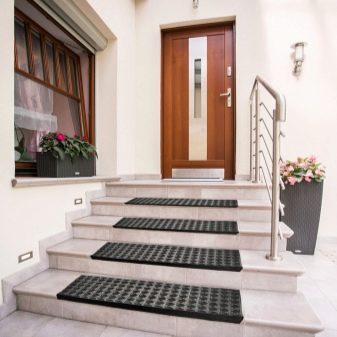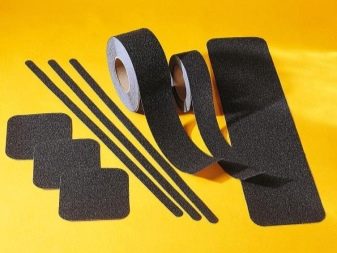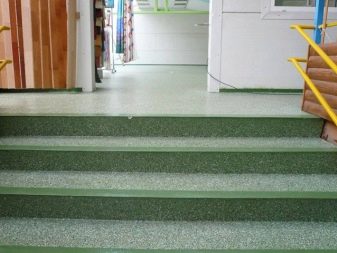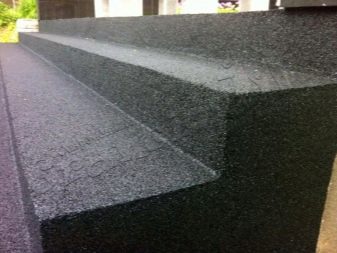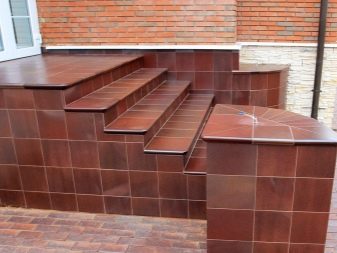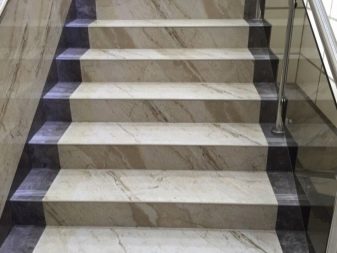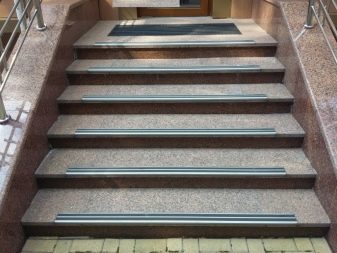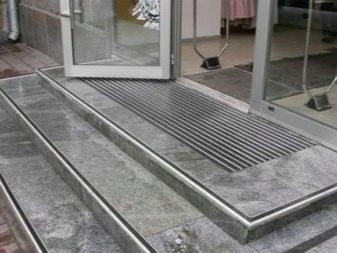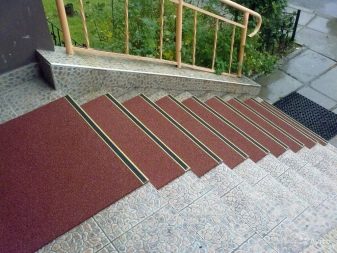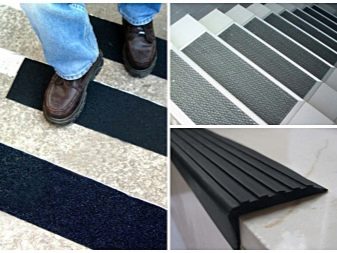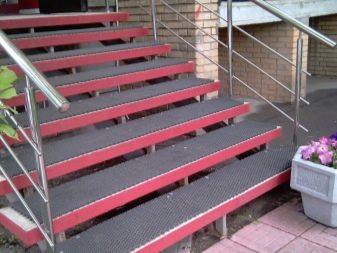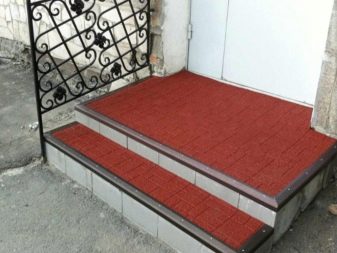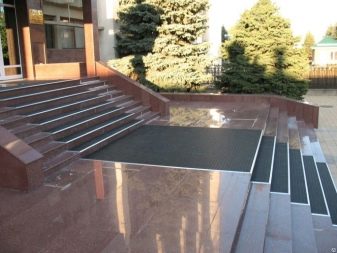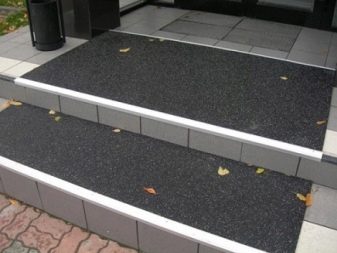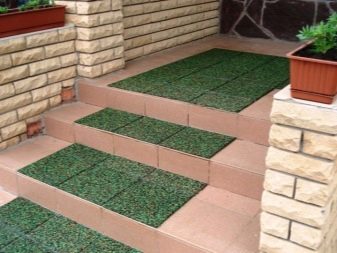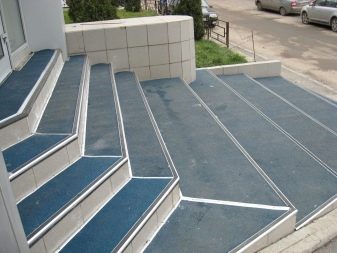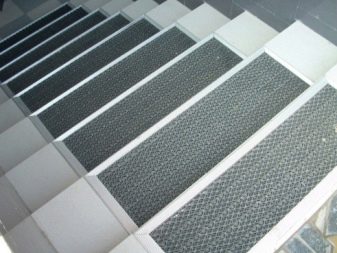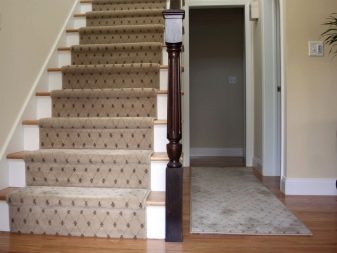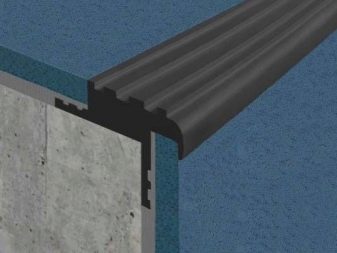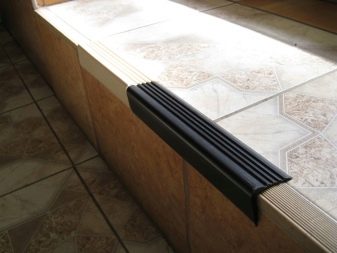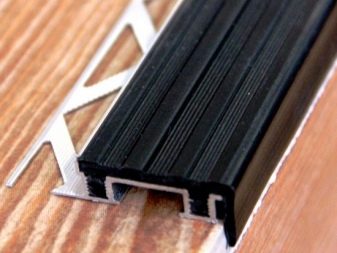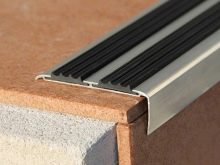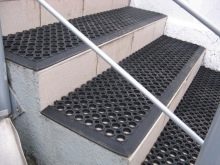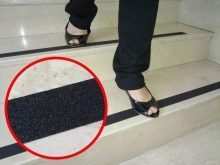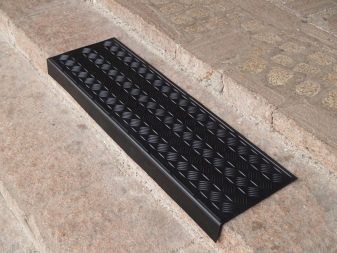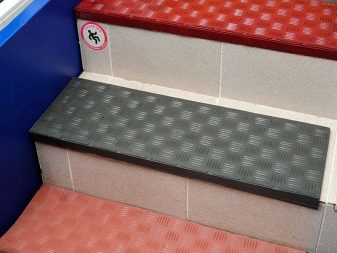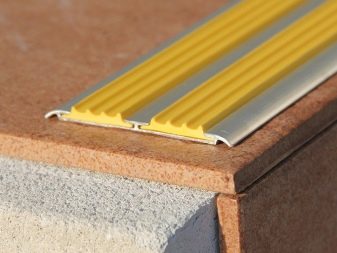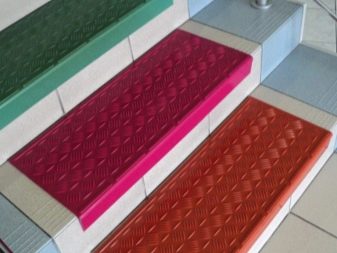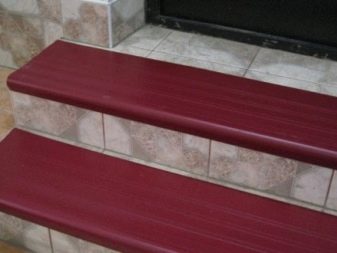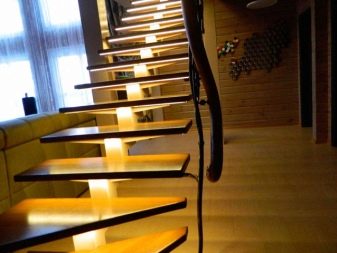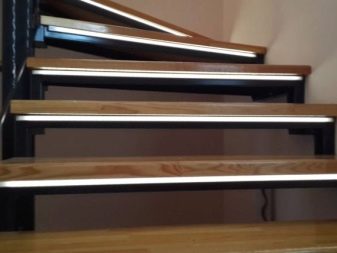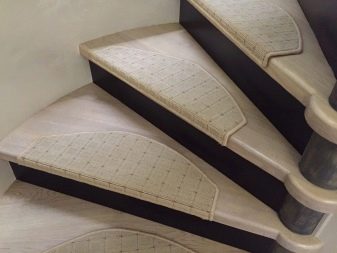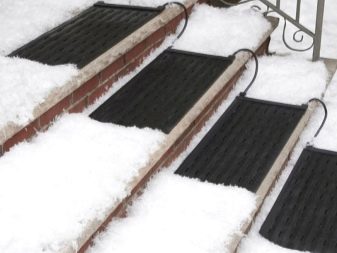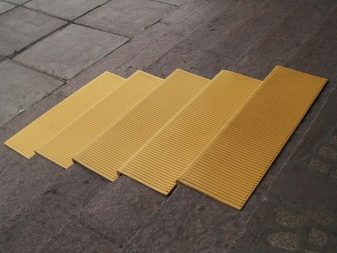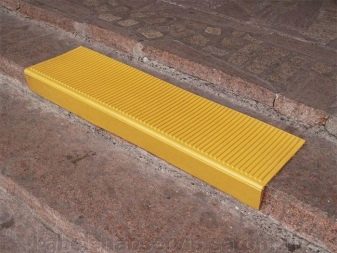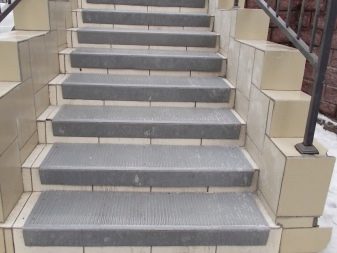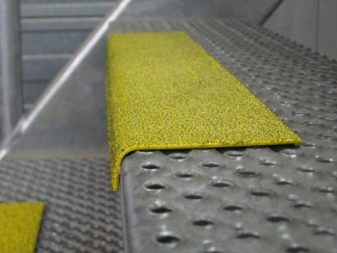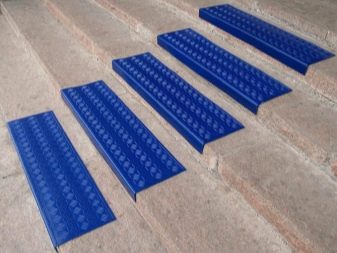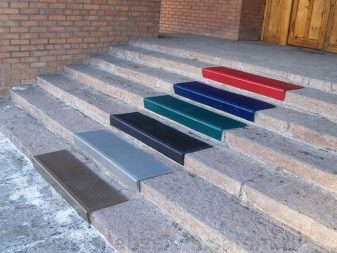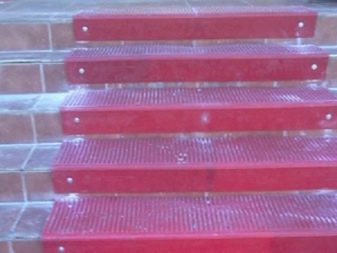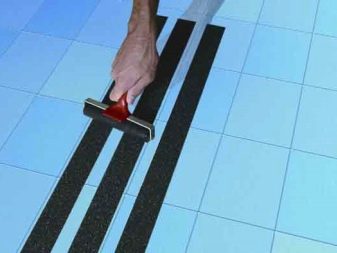We solve the safety issue: choose anti-slip pads on the steps
A staircase is a constructive element that is found in almost any building. It can be quite short, literally 2-3 steps, and very long, march, screw, multistage, but whatever the staircase, it should be safe. The steps, as a rule, are made of smooth materials: lacquered wood, metal, polished stone. To slip on such very easily. There is a solution, and the options offered are not only practical, but also aesthetic, suitable for any design projects.
How to deal with slippery steps?
To prevent slipping, apply different methods.
Dusting
At the production stage, a thin abrasive layer is applied to the tiling boards. This option is made to order, so it should be laid in the project of the stairs.
The special facing tile possesses the anti-sliding properties:
- clinker ceramic plateswith which stairs of porches are revetted - non-slip and frost-resistant, rather strong and reliable, unlike simple ceramics, look modern and beautiful;
- porcelain stoneware tiles - does not absorb moisture, suitable for exterior finish, but due to moisture resistance it is poorly bound to cement, which makes installation difficult; material reliable, satisfies aesthetic requirements, but expensive at the price.
Anti-slip grooves
They are made on the edges of stone treads immediately after finishing the stairs.
Cover plates
There are many variants of these devices, differing in form, material of manufacture, places of application, additional functions.
Types and their purpose
In addition to the main task - reducing slip, lining perform other functions:
- hide minor flaws in material and installation;
- visually level small differences in the height of the steps (it is quite difficult to perfectly adjust the size of the riser);
- protect the staircase from abrasion, mechanical damage, prolong its service life;
- can serve as a design element, interior decoration, supporting the overall concept of style.
Various floor mats and sills, located on the outer stairs, prevent mud from entering inside the premises, since the soles of the shoes can be well cleaned on their ribbed surfaces. This is relevant not only for residential buildings, but also for public buildings. The lining of the internal stairs also contributes in a certain way to maintaining cleanliness, protecting the steps of the steps from dust and making it easier to clean.
Covers can be:
- whole;
- closing the tread completely;
- in the form of rugs and ribbons covering part of the step.
In terms of safety, the larger the surface is closed, the better. From this point of view, solid linings are preferable for entrance groups, where stairs in winter can be covered with ice and snow.
Most often such covering of several types meets.
- Made from a mixture of crumb rubber with adhesive, applied directly to the surface of the tread. Fine-grained is used in public places, institutions, private housing, and coarse-grained - where increased reliability is required, for example, in hangars, in warehouses.
- Integral rubber plates, covering the whole step, seizing the upper part of the riser, sometimes they are additionally applied notches, enhancing the anti-slip effect.
It must be said that rubber is a material that is rather soft and, besides that it prevents a person from sliding and falling, it reduces trauma, if such an unpleasant situation happened.
By solid lining can be attributed and carpet for internal stairs in the form of a track. They can cover all the steps from bottom to top completely without cutting, if the design allows.
The selection of partial linings is quite wide:
- fixed seam under the tile - fixed in the process of lining, often used for external stairs;
- anti-slip overlay on the edge of the step;
- threshold angle;
- mortgage profiles;
- corner patch profiles;
- mats of various materials;
- anti-slip strips - may be abrasive.
Performance materials
- Rubber lining, probably the very first, which began to apply to create anti-slip effect. All advantages converge in this material - cheap, convenient and practical. But unfortunately, not always aesthetically pleasing.Yes, modern rubber mats are not the same as before, they can have a different color than the traditionally black, beautiful perforation. You can use them not only for porches, rubber linings are simply indispensable in rooms with high humidity: in the pool, shower, bath. But if the price is not the deciding factor, designers and designers often offer other options, for example, not plates, but rubber crumb or overlays from other materials.
- For input groups, many use combined lining consisting of a metal (most often aluminum) profile and an insert made of rubber or polymer material. Can be flat or L-shaped, as well as composite, when the profile itself is attached to the screws, and the insert insert is additionally planted on the glue. These pads are reliable and durable, have a long service life. The aluminum frame prevents snow from sticking to the rubber mat, which adds convenience to use. If necessary, it is quite easy to replace the tab without changing the profile itself. Such pads are also inexpensive for the price. Therefore, such coatings can often be seen in public buildings and institutions with a large cross-country people.
- Plastic panels and corners are also a very economical option.Fully reliable for use on external stairs, can be recommended for children's institutions, as they are performed in the widest color palette and bright colors. Suitable for baths and pools. There are original lining of plastic with a laminated coating.
- In order to externally soften the contours of massive metal structures, they are often used on the steps of such stairs. wooden linings of pine, walnut or oak. This is an option for residential premises. Such linings look beautiful and noble, successfully fit into many stylistic concepts. If you add a backlight, then climbing this ladder will be even safer.
- On domestic home stairs are widely used. mats of various textile materials. Perhaps the use of woolen pads, they are warm, walking on such barefoot is pleasant and useful. But for the price they are expensive, and those who are allergic to wool are not suitable. Therefore, the most commonly used rugs and paths of synthetic carpet. Such lining can choose almost any shape and color in accordance with the style of the interior.They are self-adhesive, can be mounted on glue or with fasteners.
- Add heat to the house can warming up lining. Such rugs with thermoelements are interconnected by wires. Heating is controlled by the remote. A similar design can be installed on the steps of the porch to prevent ice.
How to choose?
When asked what type of lining or non-slip tile to prefer, it is difficult to give a definite answer. Their main purpose is to reduce slip on the stairs, and this function is performed by all.
But several criteria can be distinguished.
- For outdoor or indoor stairs designed. As already mentioned, for entrance groups, porches you need to choose the weights and mats from more durable moisture-resistant materials.
- What material are made of. This criterion is inextricably linked with the first, that is, with the place of operation of the coating. For example, textile rugs on the street still should not be put, there they will not last long.
- Design facade or interior space. It all depends on the taste of the customer or the concept of the designer.
- Cost And this factor can be decisive.
The price depends on many factors - it is obvious that the material, but not only.
- Has an impact atypical color. If the product ordered does not fit into the proposed palette (and often black, white and shades of gray), then the deviation may increase its value.
- Custom size and lining configuration will also affect. On order can do almost anything, but at a higher cost.
- Reliability and versatility also cost more. If the pad withstands temperature changes, is resistant to moisture and the effects of aggressive media (for example, to the reagents against icing, which are brought on shoes), then its price will be higher.
It can be concluded that the more the product ordered differs from the samples offered and the more functions it can perform, the more expensive it is. Non-standard universal plates - the most expensive.
Installation Tips
There are three main ways of attaching the lining to the surface of the stair steps:
- on screws with dowels;
- on glue;
- on the adhesive put in advance by production (the self-adhesive slips).
It should be noted that the mounting on the screws more reliable,but the disadvantages include the fact that in case of replacing the entire structure, new holes have to be drilled, which gradually destroys the steps.
In two other cases, with the adherence to the technology of sticking, the lining is held fairly firmly, and there will be no problems with the replacement. Before starting work, it is important to level the surface, wipe the joints with a primer, clean and degrease. Then glue is applied to the tread or, in the case of self-adhesive linings, a protective tape is removed from the adhesive layer. The rug is laid on the step and tightly pressed. After that, it should be well ironed with a roller or tap a mallet. Now the pad will last a long time.
How to install anti-slip pads on the steps, see the following video.

